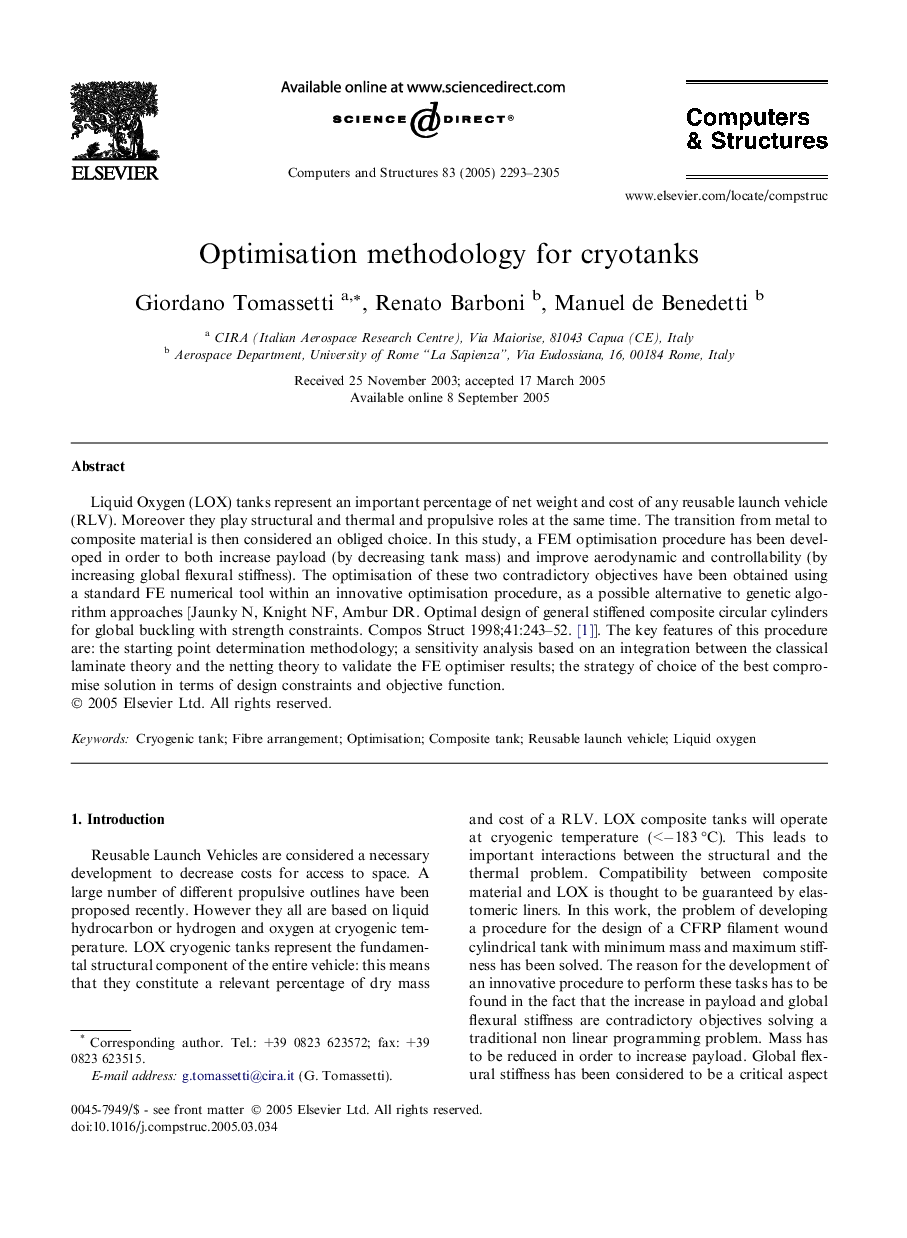| Article ID | Journal | Published Year | Pages | File Type |
|---|---|---|---|---|
| 511924 | Computers & Structures | 2005 | 13 Pages |
Liquid Oxygen (LOX) tanks represent an important percentage of net weight and cost of any reusable launch vehicle (RLV). Moreover they play structural and thermal and propulsive roles at the same time. The transition from metal to composite material is then considered an obliged choice. In this study, a FEM optimisation procedure has been developed in order to both increase payload (by decreasing tank mass) and improve aerodynamic and controllability (by increasing global flexural stiffness). The optimisation of these two contradictory objectives have been obtained using a standard FE numerical tool within an innovative optimisation procedure, as a possible alternative to genetic algorithm approaches [Jaunky N, Knight NF, Ambur DR. Optimal design of general stiffened composite circular cylinders for global buckling with strength constraints. Compos Struct 1998;41:243–52. [1]]. The key features of this procedure are: the starting point determination methodology; a sensitivity analysis based on an integration between the classical laminate theory and the netting theory to validate the FE optimiser results; the strategy of choice of the best compromise solution in terms of design constraints and objective function.
